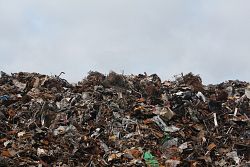

The Government has launched a consultation seeking views on proposed changes to the way Landfill Tax works in England and Northern Ireland, which will run until 21 July 2025.
Landfill Tax was introduced in October 1996 as a way of encouraging people to find more environmentally friendly ways of disposing of waste, such as recycling or re-use. Since 2000, local authority waste going to landfill has dropped 90%. In addition, the waste management sector has seen significant changes in that time period. For example, we now have energy from waste facilities and advanced recycling technologies, meaning waste is being managed more than ever before.
Although it is acknowledged that landfill will still be needed for many more years, the Government is keen to keep landfill at the bottom of the waste hierarchy. In addition, ensuring its use is reduced means fewer emissions will come from waste management, the environment will be protected and the local communities will not be as impacted.
To that end, the Government needs to make sure that resources and products are in use for longer. This is part of the circular economy, which is to be a key focus of Government policy moving forward. And within that changing policy landscape, making sure that Landfill Tax supports a transition to a circular economy is key. It therefore needs to be reformed.
One of the proposals put forward is to move away from the two-rate system. Currently, landfill tax is charged at a standard rate for most wastes, and a lower rate which applies to inert and less polluting materials. Part of the reason for this system was to reduce the amount of biodegradable waste going to landfill. As a result, above-inflation escalators were applied to the standard rate up until 2014, which led to the gap between the standard and lower rates widening over time. This has then led to some describing standard-rated waste as lower-rated to avoid the higher tax rates.
As a result, the Government wants to move towards a single rate of Landfill Tax by 2030. This will be achieved by applying an escalator to the lower rate until it meets the standard rate in 2030.
In addition, the Government proposes that:
For more information on this subject, see: